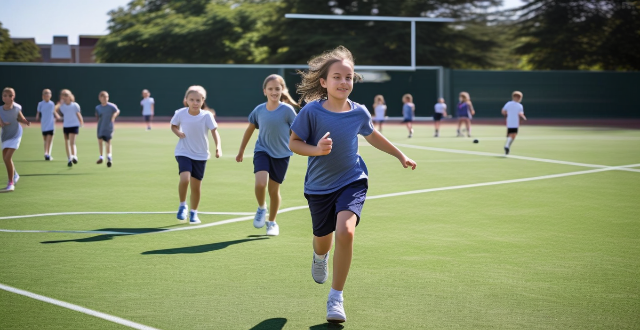Participation in sports is an essential aspect of a student's overall development. However, schools often face the challenge of balancing academic rigor with sports participation. This article discusses ways schools can encourage participation in sports without sacrificing academic rigor, including integrating sports into the curriculum, providing support for student-athletes, promoting a culture of wellness, collaborating with parents and community members, and offering incentives for academic success. By implementing these strategies, schools can create an environment where students can thrive both academically and athletically.

Encouraging Participation in Sports without Sacrificing Academic Rigor
Participation in sports is an essential aspect of a student's overall development. It helps in building physical fitness, teamwork, and leadership skills. However, schools often face the challenge of balancing academic rigor with sports participation. In this article, we will discuss some ways schools can encourage participation in sports without sacrificing academic rigor.
1. Integrating Sports into the Curriculum
One way to encourage participation in sports without sacrificing academic rigor is by integrating sports into the curriculum. This can be done by:
- Offering physical education classes that focus on developing athletic skills and knowledge about sports.
- Including sports-related topics in other subjects, such as history or science.
- Providing extracurricular activities that allow students to participate in sports while still meeting their academic requirements.
2. Providing Support for Student-Athletes
Another way to encourage participation in sports without sacrificing academic rigor is by providing support for student-athletes. This can include:
- Offering tutoring services or study halls during practice times.
- Providing access to resources such as online libraries or study materials.
- Allowing flexible schedules for athletes so they can balance their academic and athletic commitments.
3. Promoting a Culture of Wellness
Promoting a culture of wellness within the school community can also help encourage participation in sports without sacrificing academic rigor. This can involve:
- Encouraging healthy lifestyle choices through initiatives such as nutrition programs or exercise challenges.
- Providing opportunities for students to engage in physical activity outside of formal sports teams, such as yoga or dance classes.
- Celebrating achievements in both academics and athletics equally.
4. Collaborating with Parents and Community Members
Collaborating with parents and community members can also help encourage participation in sports without sacrificing academic rigor. This can include:
- Working with parents to ensure that their children have adequate time and resources for both academics and athletics.
- Partnering with local organizations to provide additional resources and support for student-athletes.
- Engaging with alumni who have succeeded in both academics and athletics to serve as mentors for current students.
5. Offering Incentives for Academic Success
Finally, offering incentives for academic success can help encourage participation in sports without sacrificing academic rigor. This can include:
- Rewarding students who maintain good grades with priority registration for sports teams or special events.
- Providing scholarships or other financial assistance for student-athletes who demonstrate excellence in both academics and athletics.
- Recognizing outstanding academic achievements during athletic events or award ceremonies.
In conclusion, there are several ways schools can encourage participation in sports without sacrificing academic rigor. By integrating sports into the curriculum, providing support for student-athletes, promoting a culture of wellness, collaborating with parents and community members, and offering incentives for academic success, schools can create an environment where students can thrive both academically and athletically.